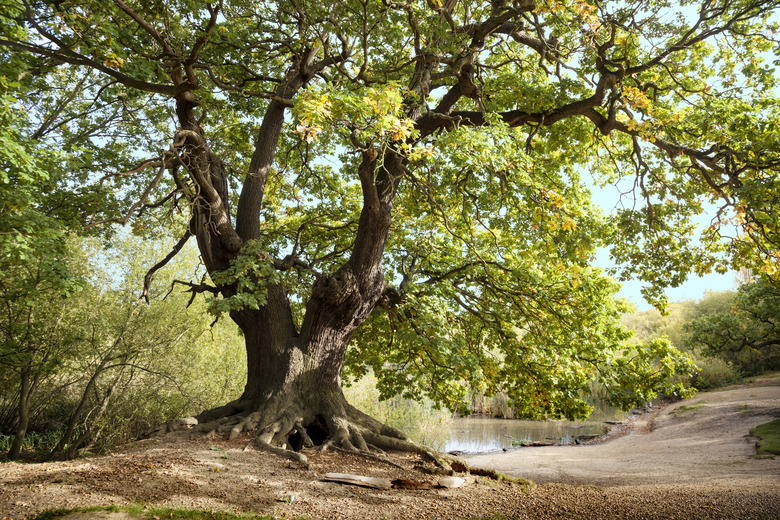How To Cut Tree Roots Without Killing The Tree
We may receive a commission on purchases made from links.
Trees need roots to survive, so cutting off too many can kill even the healthiest tree. There may come a day when you need to cut tree roots in order to protect the foundation of your home, to do construction, to prevent tripping hazards from exposed roots, to stop damage to your sidewalk, to grow other plants, to protect your sewer line or septic tank, or for any number of other reasons. Safely cutting the roots without harming your tree requires planning and patience to do the job properly.
Make a Plan
Make a Plan
Whenever possible, schedule root pruning for late winter or early spring, as this will minimize the risk of the tree becoming dehydrated, and since most trees are dormant at this time, it will cause the least shock to the tree.
Avoid getting too close to the tree. To find out how far away you should stay from the trunk, measure the diameter of the tree 4 feet above the ground and then multiply that number by 6 for mature trees or 3 for young trees. The sum you get will indicate how far away you should stay from the trunk. As an example, if your fully grown tree has a trunk that is 6 inches wide, you should draw a circle 36 inches (6 x 6 = 36) around the trunk and then avoid cutting any roots within this circle.
Because you should never cut more than 25 percent of a tree's roots at once, you should then divide the circle around your tree into quadrants. Avoid making cuts to the remaining quadrants for another two years and if you need to prune roots on every side, start with the quadrant opposite the one you have already cut.
Large roots give trees structural stability, and removing them can result in the tree falling over during a storm. If any of the roots you plan to cut are particularly large, contact a professional to evaluate whether the roots can be cut safely. You should also call a professional if the tree is already leaning.
Make the Cuts
Make the Cuts
Mark the ground where cuts need to be made or if the roots are already above ground, mark the roots themselves. Expose the roots you need to cut by digging a hole, taking care to remove soil around all sides and underneath the root, ensuring there is enough room in the hole for you to safely and comfortably use your lopper or saw.
Always use a sharp lopper or hand saw to make clean cuts since this means faster healing and a reduced risk of disease. Because roots are very susceptible to disease, always fully sterilize the saw before cutting each root by cleaning the saw with an alcohol-soaked cloth. Try to cut at root junctions wherever possible.
Once each cut has been made, pull up the rest of the cut root and then quickly fill in soil around the surviving root. When the hole has been filled in, mulch the area above it. After making all of your cuts, water the tree well under the entire drip line.
